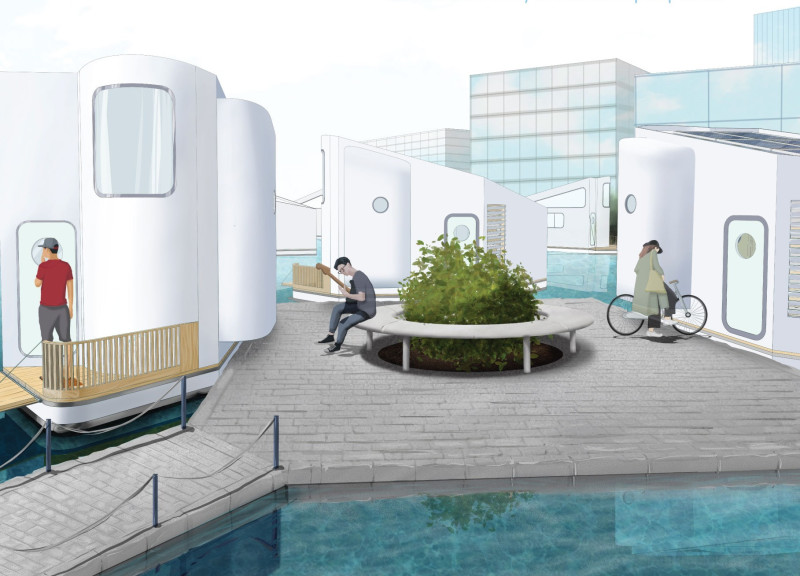5 key facts about this project
The Canal Nomad project addresses the challenge of urban density in Rotterdam by introducing a series of floating houses along the Nieuwe Maas River. This initiative connects architecture with the waterways, creating living spaces that promote interaction between residents and their surroundings. The design focuses on sustainability and community, providing a unique solution to modern urban living.
Design Concept
The key idea behind Canal Nomad is the concept of a borrowed space that exists between public and private realms. This approach enhances community ties by allowing individuals to inhabit homes that encourage engagement with the environment. Each station has a limited number of floating houses, fostering a sense of community while respecting the characteristics of the urban waterfront.
Functional Layout
Each floating house offers a practical layout with balconies, living and dining areas, kitchens, bedrooms, and bathrooms. This arrangement maximizes space usability and meets the needs of modern residents. Functional elements, such as solar panels for energy and vertical hydroponic farms for food, highlight the project's commitment to sustainability, supporting self-sufficiency and comfort.
Material Utilization
Materials play an important role in defining the durability and resilience of Canal Nomad. Key selections include prefabricated fiberglass cladding, which aids in efficient construction and weather resistance. Additionally, maple beams and batt insulation improve structural strength and thermal performance. The use of Steigerhout sheathing and fiberglass sheathing adds to the overall integrity, ensuring that the floating houses can withstand their environment effectively.
Design Interaction with Context
The project is skillfully adapted to its geographical location, taking advantage of the complex network of canals and rivers in Rotterdam. The relationship among urban streets, boats, and buildings creates a dynamic conversation that enhances the area. This approach not only acknowledges the city’s unique features but also illustrates how housing can coexist with nature, reshaping perceptions of urban living.
The design includes aluminum framing for float slots, which allows for stability and movement. This careful consideration enables the homes to navigate the water while retaining their structural integrity.



















































